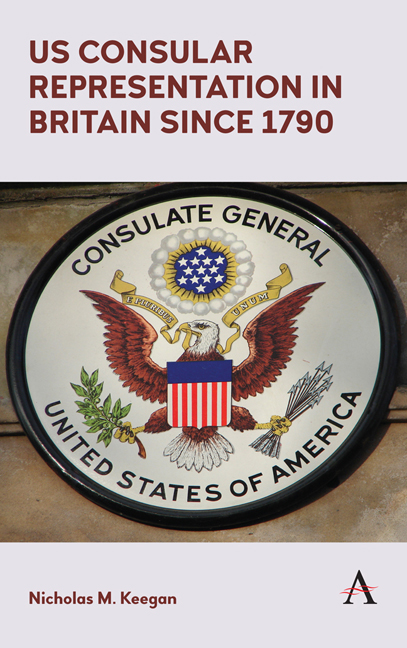Book contents
- Frontmatter
- Dedication
- Contents
- List of Illustrations
- Foreword
- Preface
- Acknowledgements
- Introduction
- PART 1
- PART 2
- PART 3
- Chapter Six Consular Posts and Consular Agencies in Major Cities
- Chapter Seven Belfast
- Chapter Eight Birmingham
- Chapter Nine Bradford
- Chapter Ten Bristol
- Chapter Eleven Cardiff
- Chapter Twelve Dublin
- Chapter Thirteen Dundee
- Chapter Fourteen Dunfermline
- Chapter Fifteen Edinburgh and Leith
- Chapter Sixteen Falmouth
- Chapter Seventeen Liverpool
- Chapter Eighteen London
- Chapter Nineteen Newcastle upon Tyne
- Chapter Twenty Southampton
- Chapter Twenty-One Stoke on Trent
- Chapter Twenty-Two An Evolving, Adaptive Service
- Appendix: Locations and Categories of Consular Offices
- Notes
- Sources
- Bibliography
- Index
Chapter Nine - Bradford
from PART 3
Published online by Cambridge University Press: 21 June 2018
- Frontmatter
- Dedication
- Contents
- List of Illustrations
- Foreword
- Preface
- Acknowledgements
- Introduction
- PART 1
- PART 2
- PART 3
- Chapter Six Consular Posts and Consular Agencies in Major Cities
- Chapter Seven Belfast
- Chapter Eight Birmingham
- Chapter Nine Bradford
- Chapter Ten Bristol
- Chapter Eleven Cardiff
- Chapter Twelve Dublin
- Chapter Thirteen Dundee
- Chapter Fourteen Dunfermline
- Chapter Fifteen Edinburgh and Leith
- Chapter Sixteen Falmouth
- Chapter Seventeen Liverpool
- Chapter Eighteen London
- Chapter Nineteen Newcastle upon Tyne
- Chapter Twenty Southampton
- Chapter Twenty-One Stoke on Trent
- Chapter Twenty-Two An Evolving, Adaptive Service
- Appendix: Locations and Categories of Consular Offices
- Notes
- Sources
- Bibliography
- Index
Summary
When the United States opened its commercial agency there in 1863, Bradford, a Yorkshire town, was a major centre of the British woollen industry and exported its goods principally to the United States. The offices occupied two large rooms in the Bradford Exchange building at a quarterly rent of £21. The agency came under the oversight of George J. Abbott who was appointed consul at both Sheffield and Bradford in September 1864. The first commercial agent appointed in 1863 was J. Emory McClintock, a native of Carlisle, Pennsylvania. It was a responsible post for someone who was only twentythree years of age and completely inexperienced. He had come from Paris where his father was pastor of the American Chapel. McClintock was not paid a salary but derived his income from fees and was not allowed to trade. Expenses such as clerk hire, office rent, stationery and so forth were deducted from the fees and the balance was retained as his income. He left Bradford in 1866 and in later years became a distinguished actuary and mathematician.
McClintock was replaced by E. D. Webster, of Nebraska, who also was not paid a salary, deriving his income from fees but, unlike McClintock, was allowed to trade. The value of goods exported to the United States through the district for the quarter ending 31 December 1866 was more than two and a half million dollars, with the majority of the goods being ‘stuffs [dress materials and linings], carpets, and machinery’. The fees charged for that quarter were just under $3,000. Webster remained less than a year, resigning in March 1867. He left in charge James L. Raymond, the vice commercial agent and an American citizen, and recommended him as a suitable replacement. The value of exports to the United States from the district remained high, and during the year ending 30 September 1867 was almost eleven and a half million dollars. Much of the agency business was of a routine nature, although there was a complaint by a prominent Bradford firm engaged in the export trade about the high tariff charged on goods entering the United States.
- Type
- Chapter
- Information
- US Consular Representation in Britain since 1790 , pp. 109 - 114Publisher: Anthem PressPrint publication year: 2018

